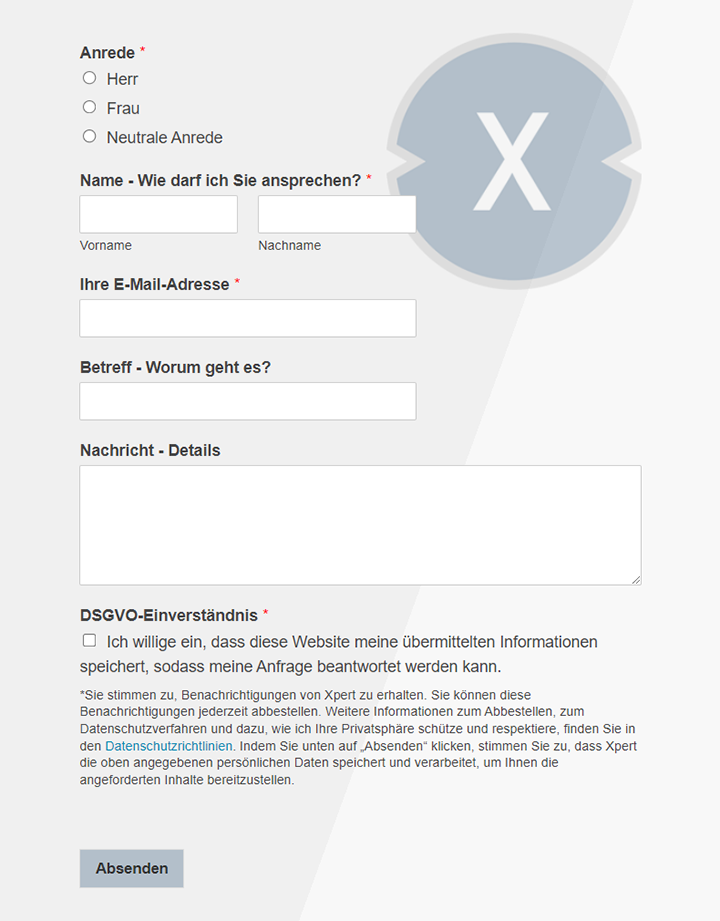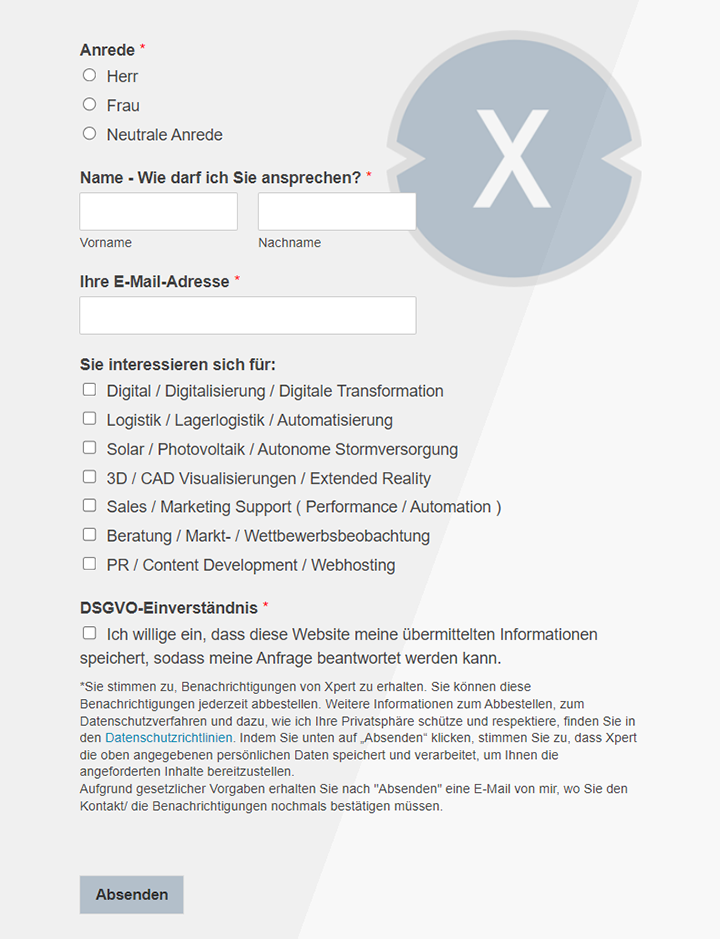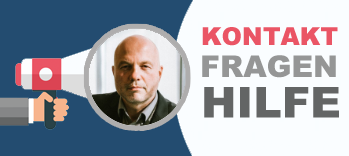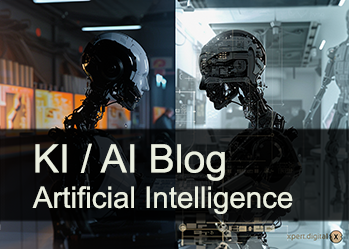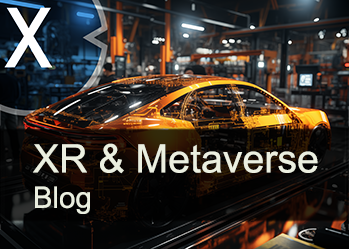Cause of traffic loss due to AI and growing content competition of 45% in the past two years
Xpert pre-release
Language selection 📢
Published on: June 6, 2025 / update from: June 6, 2025 - Author: Konrad Wolfenstein

Cause of traffic loss due to AI and growing content competition of 45% in the past two years-Image: Xpert.digital
SEO in the AI age: New challenges for website operators
Sundar Pichai's reaction to publisher care: traffic losses through AI-overviews and the future of web visibility
Google CEO Sundar Pichai has reacted in a number of current interviews and public appearances to the growing concerns of website operators who fear that Google's new AI-based search functions could lead to significant traffic losses. His answers reveal a balancing act between optimistic promises for the future of the web and the hard reality of measurable traffic losses, which are already documented by studies today. The discussion about AI Overviews and their effects on digital economy illustrates a fundamental change in search behavior and presents established SEO strategies with new challenges.
Suitable for:
Content explosion and tighter competition in digital space
Exponential growth of the indicated websites
Sundar Pichai has repeated remarkable statistics in several interviews, including a Bloomberg discussion: Google has increased the number of crawlable websites by 45 percent in the past two years. According to Pichai, this massive expansion of the indexed content reflects a general “explosion” of the content on the web, which is powered by various factors. The Google CEO attributes this development to a combination of more available time of people, improved content creating tools and a general increase in creative activities in digital space.
This exponentially growing amount of content dramatically increases the competition for visibility. While a limited number of websites used to compete for the top positions, content manufacturers have to assert themselves in a much more overcrowded digital ecosystem today. Pichai describes this development as an expansion of the “space of possibilities”, but also emphasizes that Google is “good in finding the needle in the haystack”. This metaphor indicates the increasing challenge of distinguishing high quality content from the growing mass of automatically generated or inferior content.
Effects on traditional SEO strategies
The dramatic increase in the content of the content has far-reaching consequences for established SEO strategies. While traditional search engine optimization has long been focused on the placement in the top 10 results, current analyzes show that AI overviews quote content from pages in 60 percent of cases that appear in the classic organic search results, while 40 percent of the quotes come from lower pages that cannot be found on the first search result. This displacement means that content accuracy and thematic depth become more important than the general domain authority or classic ranking factors.
Companies must adapt their content strategies accordingly and increasingly rely on longtail optimization and very detailed, structured content. The challenge is that the content of the AI overviews changes regularly, even if the quoted sources remain the same. This requires continuous adjustment of the content strategy and makes long-term SEO planning more complex.
Suitable for:
AI-overviews and their influence on website traffic
Pichai's optimistic representation versus empirical findings
Sundar Pichai has repeatedly emphasized that Google continues to send “high -quality traffic” to external websites with the new AI overviews. In his statements, he compares the AI-generated answers with the existing featured snippets and argues that the context improve through the AI overviews and grow the number of applications. His claim that people would return more often after reading the AI overviews would return and look for further sources on the web.
However, this optimistic presentation is in direct contradiction to empirical studies on the actual user behavior. A detailed analysis by Kevin Indig and Eric van Buskirk, who examined the behavior of 70 US users in eight real search tasks, shows dramatic losses in the click rates. When AI overviews appear, the click-through rate (CTR) can collapse by two thirds on desktop devices-from 28 to 11 percent. At least it loses almost half of the clicks on mobile devices, from 38 to 21 percent.
Structural changes in the search result presentation
A particularly problematic aspect for website operators is the recent introduction of internal Google links in the AI Overviews. Google has officially confirmed that links in the AI Overviews now refer to further Google search results, in addition to the existing links to external websites. In fact, this change means that Google keeps users longer in their own ecosystem and at the same time increase the number of search queries.
The representation of these different link types is strategically weighted: the internal Google links are shown significantly more prominently than dotted underlines, while the external links appear as small symbol links at the end of the lines. This visual hierarchy means that users prefer to click on the internal links, which further reduces the likelihood of clicks on external websites.
Measurable traffic losses in various industries
Independent studies have already documented concrete traffic losses since the introduction of the AI Overviews. Gilad David Maayan, CEO of Agile SEO, analyzed 23 websites after the launch of the AI Overviews and determined declines of organic traffic between 18 and 64 percent. Another study by the SEO platform Ahrefs shows that the click rate has dropped to position 1 by 34.5 percent.
Informative content is particularly affected in which users get their questions answered directly through the AI Overviews. With transactional search queries, on the other hand, the clicks can even rise, since the AI summits act as purchase advice and generate more targeted traffic. This development leads to a redistribution of traffic between different content categories and industries.
🎯🎯🎯 Benefit from Xpert.Digital's extensive, fivefold expertise in a comprehensive service package | R&D, XR, PR & SEM

AI & XR 3D Rendering Machine: Fivefold expertise from Xpert.Digital in a comprehensive service package, R&D XR, PR & SEM - Image: Xpert.Digital
Xpert.Digital has in-depth knowledge of various industries. This allows us to develop tailor-made strategies that are tailored precisely to the requirements and challenges of your specific market segment. By continually analyzing market trends and following industry developments, we can act with foresight and offer innovative solutions. Through the combination of experience and knowledge, we generate added value and give our customers a decisive competitive advantage.
More about it here:
Future of web traffic: opportunities and risks in the AI-driven market
Missing transparency and methodological criticism
Lack of Google's verifiable data
Despite Pichai's repeated claims that AI overviews would lead to more and better traffic, Google remains guilty of concrete, publicly accessible evidence. The statement that the time to spend users on websites is increasing explicitly in the reports as unclear. This lack of transparency increases the skepticism in the publisher community and makes it difficult to objective evaluation of the actual effects.
Pichai's reference to internal measurements such as length of stay and traffic quality without corresponding data publication is contrasting to the available independent analyzes. These show that users visit Google more often, but spend less time per visit - an indicator that many inquiries are already answered on the search page. This discrepancy between Google's presentation and independent findings feeds doubts about the credibility of the CEO statements.
Different effects according to target groups and devices
The studies show significant differences in the effects of the AI overviews depending on the user groups and devices used. This differentiation is not taken into account in Pichai's general statements, which increases the criticism of the flat -rate presentation. For example, older user groups show other interaction patterns with AI overviews than younger ones, and mobile users behave differently than desktop users.
The complexity of these differences makes flat -rate statements about the effects of the AI overviews. Publisher need differentiated data in order to be able to adapt your strategies accordingly, but Google only receive general insurance through positive developments.
Regulatory challenges and industry reactions
EU examination of the AI overviews
The European Commission has initiated intensive investigations of the effects of Google's AI Overviews. The focus of the Brussels investigations is several central areas: copyright infringement due to the display of third -party content without express consent, possible violations of the Digital Markets Act (DMA) and Digital Services Act (DSA) as well as risk of media variety according to the European Media Freedom Act (EMFA).
This regulatory attention underlines the social scope of the changes in search behavior. The EU sees the danger that independent media and smaller publishers could be systematically disadvantaged by the AI overviews, which would endanger the diversity of information in the long term. Against this background, Pichai's optimistic representations must be measured against concrete evidence.
Suitable for:
Strategic adjustments to the media industry
Publishers and media companies are already responding to the changed conditions by AI Overviews. According to a cross vertical survey, companies are increasingly relying on social media (58 percent), content-based website optimization (41 percent) and PR measures (24 percent). It is interesting that despite the documented traffic losses, 49 percent of the companies surveyed report stable organic access figures, while 16 percent even have an increase.
These different experiences indicate that the effects of the AI overviews depend heavily on the content strategy and the industry. Companies that consistently set on structured data, local optimization and high-quality content strategies seem to get better through the changeover than those that remain focused on traditional SEO techniques.
Google's course in the AI-driven market: strategic adjustments for the future
Change of the search engine strategy on Google
Pichai's statements reflect Google's strategic realignment in an increasingly competitive AI market. Google's market share in the online search has dropped from about 90 percent before developing generative AI to 65 to 70 percent, and analysts predict a further decline to less than 50 percent within the next five years. This market dynamics explain Google's aggressive integration of AI features, even if it could be at the expense of website traffic.
The introduction of AI Mode, which should be “much lower than the traditional search”, illustrates Google's strategy of keeping users longer on their own platforms due to comprehensive AI answers. This development is in direct conflict with the interests of the website operators who rely on traffic from Google search.
New requirements for content strategies
The changes through AI overviews require a fundamental realignment of the content strategies. Websites have to structure your content more, work with headings, lists and tables and offer practice -oriented information. Pure keyword optimization no longer works; Instead, trustworthiness and citation become decisive factors.
The visibility on “Trust” channels such as Reddit and YouTube becomes particularly important. These platforms become more important as sources for AI overviews, which forces publisher to diversify their content distribution over several channels. The future no longer belongs to pure website traffic, but visibility in various AI-based formats.
Suitable for:
- Adaptation of the SEO strategies for AI Overviews: A comprehensive guide for the new era of Google search
The future of web traffic: tensions and losses
The discussion about Sundar Pichai's reactions on the concerns of the publisher illustrates the fundamental tensions in the changing digital ecosystem. While Google CEO makes optimistic promises about the future of web traffic, independent studies are already documenting significant losses in click rates and organic traffic. The introduction of internal Google links in the AI Overviews also reinforces this tendency and shows that Google is ready to put your own interests about that of the website operator.
The lack of transparency in the positive data cited by Pichai undermines the credibility of his statements and increases distrust in the publisher community. At the same time, the EU investigations and regulatory initiatives show that the social effects of the AI overviews are increasingly receiving political attention.
For website operators and content manufacturers, this means a transition phase with considerable uncertainties. In the future, successful strategies will have to rely on the diversification of traffic sources, structured content optimization for AI systems and increased presence on alternative platforms. The time of the exclusive dependency on Google traffic comes to an end, even if Pichai claims the opposite. The future belongs to those companies that adapt to the new realities of AI-supported search early and diversify their content strategies accordingly.
We are there for you - advice - planning - implementation - project management
☑️ SME support in strategy, consulting, planning and implementation
☑️ Creation or realignment of the digital strategy and digitalization
☑️ Expansion and optimization of international sales processes
☑️ Global & Digital B2B trading platforms
☑️ Pioneer Business Development
I would be happy to serve as your personal advisor.
You can contact me by filling out the contact form below or simply call me on +49 89 89 674 804 (Munich) .
I'm looking forward to our joint project.
Xpert.Digital - Konrad Wolfenstein
Xpert.Digital is a hub for industry with a focus on digitalization, mechanical engineering, logistics/intralogistics and photovoltaics.
With our 360° business development solution, we support well-known companies from new business to after sales.
Market intelligence, smarketing, marketing automation, content development, PR, mail campaigns, personalized social media and lead nurturing are part of our digital tools.
You can find out more at: www.xpert.digital - www.xpert.solar - www.xpert.plus








